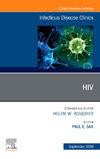艰难梭菌的体内和体外模型研究。
IF 4.1
3区 医学
Q1 IMMUNOLOGY
引用次数: 0
摘要
一些体外和体内的模型已经发展为表征艰难梭菌感染和疾病。叙利亚仓鼠和小鼠模型是主要的体内感染模型。无脊椎动物和体外方法可用于模拟定植和疾病的不同步骤。体外模型的复杂性各不相同,有些模型可以在简单的培养条件下进行高通量筛选,而另一些模型则可以再现宿主-病原体相互作用的更复杂特征。由于没有单一模型能完全再现患者的疾病谱,因此最佳的研究设计应整合多个互补模型的输出,以帮助我们了解艰难梭菌。本文章由计算机程序翻译,如有差异,请以英文原文为准。
In vitro and in Vivo Models for Understanding Clostridioides difficile.
Several in vitro and in vivo models have been developed for characterizing Clostridioides difficile infection and disease. Syrian hamster and mouse models are the primary in vivo models of infection. Invertebrate animals and in vitro approaches can be used to model different steps of colonization and disease. In vitro models vary in complexity, with some facilitating high throughput screening under simple culture conditions and others reproducing more complex features of host-pathogen interactions. As no single model fully reproduces the disease spectrum in patients, optimal study design should integrate output from multiple, complementary models to inform our understanding of C. difficile.
求助全文
通过发布文献求助,成功后即可免费获取论文全文。
去求助
来源期刊
CiteScore
8.30
自引率
0.00%
发文量
75
审稿时长
6-12 weeks
期刊介绍:
Infectious Disease Clinics of North America updates you on the latest trends in the clinical diagnosis and management of patients with infectious diseases, keeps you up to date on the newest advances, and provides a sound basis for choosing treatment options. Each issue focuses on a single topic in infectious disease, including clinical microbiology, compromised host infections, gastrointestinal infections, global health, hepatitis, HIV/AIDS, hospital-acquired infections, travel medicine, infection control, bacterial infections, sexually transmitted diseases, urinary tract infections, and viral infections.

 求助内容:
求助内容: 应助结果提醒方式:
应助结果提醒方式:


